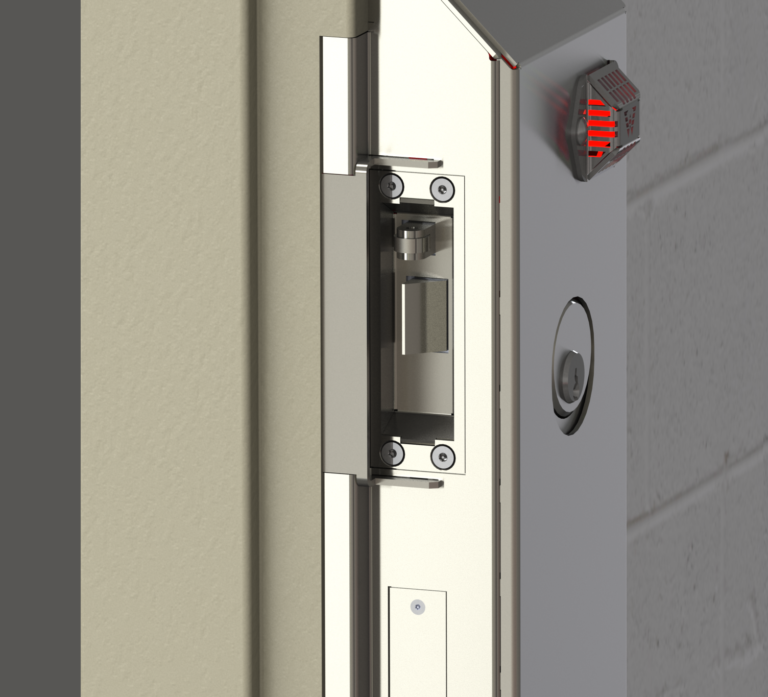Work Begins on Orleans Parish Mental Health Unit

By CN Staff
NEW ORLEANS—As the Big Easy begins Phase III in the rebuilding of justice facilities destroyed by Hurricane Katrina, work will soon begin on the 89-bed Orleans Parish Medical Mental Health Unit. The highly intensive facility will serve both male and female inmates and provide a crucial link between the existing Phase I and Phase II structures.
City officials chose Grace Hebert Curtis Architects to develop the project. The firm also worked hand-in-hand with federal monitors and legal officials to develop the two previous phases. Working jointly, GHC’s criminal justice and medical studios expect to complete drawings in August, and construction on the design-bid-build project will likely begin in January 2021 with completion aiming for 2023.
Owned by the City of New Orleans and operated by the Orleans Parish Sheriff’s Office, the complex project is a long-awaited undertaking. To help achieve the optimal level of functionality and operational quality, GHC invited a group of City of New Orleans and OSPO staff to partake in the design process. The group provided important insights that will ultimately elevate care and inmate success while minimizing personnel requirements in an otherwise staff-intensive facility.
When completed, the 80,500-square-foot facility will include a medical mental health unit for women and a mental health unit for men. The men’s unit in particular is designed to offer nearly 100 percent circular visibility to reduce inmate self-harm. Visibility and supervision are nearly as high in the women’s unit, which is smaller and designed for a slightly different functionality. Both units though will offer maximum flexibility to support a variety of inmate needs—and to provide staff with the opportunity to deliver better, more efficient care to reduce length of stay.
Each unit will comprise 4-, 6-, and 8-person sub-dayrooms to improve classification. The ability to group inmates of similar need will help facilitate a safer, more successful stepped re-entry to the general population. Among the other facilities are a therapeutic center, small meeting rooms for one-to-one counseling, large meeting rooms and administrative space.
While primarily focused on mental health, the Phase III building will also house a medical infirmary and medical clinic for both male and female inmates. This will allow the campus’ temporary infirmary and clinic to be returned to program space. The rest of the structure will include a family visitation center and laundry services.
Especially meaningful for OSPO staff and operators, Phase III will additionally provide a vital second-floor structural link between the Phase I and Phase II buildings: a kitchen/warehouse facility and a 1,438-bed jail with administrative offices, respectively. This will allow the previous two buildings to operate as originally intended and let staff easily transport items back and forth. It will specifically improve food services, as the facility prepares and distributes nearly 4,500 inmate meals daily.
In selecting materials and finishes, GHC opted for durable, suicide-resistant fixtures, furnishings and plumbing as well as a number of thick glass wall panels to improve visibility. The exterior will complement the existing structures and include precast concrete and metal panels for continuity.
A report from Grace Hebert Curtis Architects (GHC) contributed to this story.






